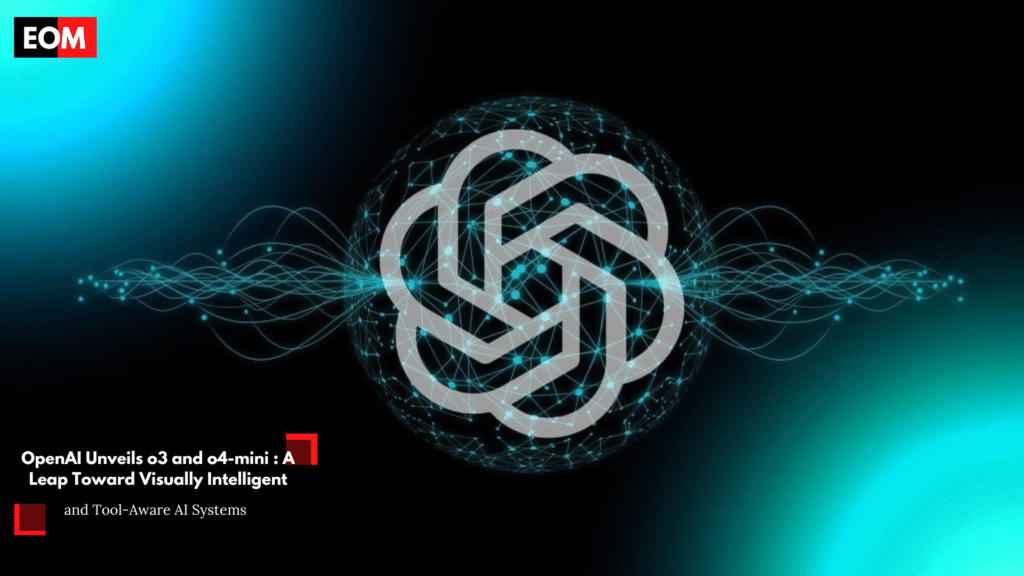OpenAI Unveils o3 and o4-mini: A Leap Toward Visually Intelligent and Tool-Aware AI Systems

San Francisco – OpenAI has officially introduced its latest generation of AI models, o3 and o4-mini, marking a major milestone in the evolution of multimodal artificial intelligence. These advanced systems go beyond traditional text-based processing, combining visual reasoning, autonomous tool use, and deep generalization across domains—bringing us closer to true multisensory AI and the broader vision of Artificial General Intelligence (AGI).
From Text to Multimodal Reasoning
What differentiates o3 from its predecessors is its ability to understand and reason with images, diagrams, charts, and other visual data—not just describe them. This includes capabilities such as interpreting blueprints, identifying relationships in infographics, correcting errors in designs, and even merging symbolic, spatial, and textual elements for complex decision-making.
Applications are vast and span several industries:
- Healthcare: Reviewing x-rays and lab reports alongside clinical notes
- Engineering: Simulating stress points and suggesting design improvements
- Education: Providing contextual feedback on handwritten equations or essays
- Creative fields: Interpreting and ideating from visual sketches and design drafts
This level of visual understanding makes o3 a powerful universal data interpreter, capable of analyzing satellite imagery, scientific diagrams, and even artistic compositions.
Tool-Aware Intelligence
In a major usability advancement, o3 comes with autonomous tool orchestration. It can decide when and how to use tools like:
- Python for coding and data analysis
- Browser access for real-time research and citation
- DALL·E for image generation and editing
- File interpreters for documents, spreadsheets, and slides
This eliminates the need for detailed, step-by-step prompting. A user might simply ask, “What are the trends in this CSV?”—and the model will clean, analyze, visualize, and narrate the results with minimal input.
Such autonomy is transformative across professions:
- Product teams can summarize feedback from screenshots and suggest design revisions
- Legal firms can compare clauses and annotate scanned contracts
- Researchers can generate literature reviews with citations in seconds
Technical Performance and Benchmarks
OpenAI’s o3 delivers breakthrough results across leading benchmarks:
- ARC-AGI: 87.5%, demonstrating advanced abstract reasoning
- GPQA Diamond: 87.7%, approaching PhD-level scientific reasoning
- SWE-bench (code generation): 22.8% improvement over GPT-4
- AIME 2024: 96.7%, solving Olympiad-level math without hand-holding
These results demonstrate not only raw power but also versatility, with the model adapting across disciplines like mathematics, science, and logic—crucial for scalable general-purpose AI.
Ethics Through “Deliberative Alignment”
As AI grows more autonomous, safety becomes paramount. OpenAI is addressing this through deliberative alignment, a new technique that enables the model to evaluate the ethical implications of its responses before generating them. This reduces the likelihood of both harmful responses and unnecessary censorship, offering balanced exploration of sensitive topics.
Internal tests show:
- 30–50% reduction in harmful completions
- Fewer hallucinations in nuanced domains
- Greater adherence to policy without sacrificing utility
o4-mini: Efficient AI for Real-World Applications
While o3 leads on capability, o4-mini is designed for efficiency, speed, and affordability—ideal for business and enterprise integration. Retaining much of o3’s reasoning power, it is optimized for scenarios where fast, responsive AI is needed at scale.
Key use cases include:
- Customer support: Diagnosing errors from image-based queries
- Healthcare operations: Automating insurance processing
- Mobile and embedded systems: Supporting AI use cases at the edge
Its lightweight nature makes it ideal for startups, mobile applications, and cost-conscious deployments—expanding OpenAI’s reach into everyday tools and platforms.
Toward the Future: GPT-5 and Beyond
OpenAI CEO Sam Altman confirmed that GPT-5 is already in development, with a release anticipated by late 2025. The next-generation model is expected to integrate audio, video, and embodied capabilities—potentially enabling fully sensory-aware AI agents that can observe, reason, and act in the physical world.
In the meantime, o3 and o4-mini are accessible via the ChatGPT web and mobile apps, supporting text, file uploads, and image interactions. Developer tools and SDKs are expected to follow in the coming months, enabling a wave of intelligent applications built on top of this new AI foundation.
A Step Closer to General Intelligence
With o3 and o4-mini, OpenAI is not just refining AI—it’s redefining it. These models mark a transition from reactive tools to proactive collaborators that can see, analyze, and reason in ways that mirror human cognition. As the world prepares for AI to take on increasingly complex roles in research, industry, and governance, these new models represent a major leap toward that reality.

